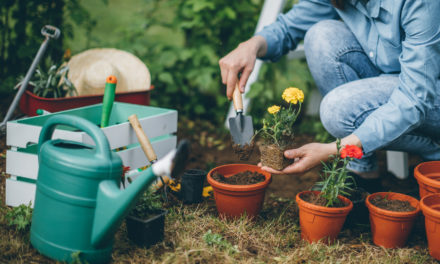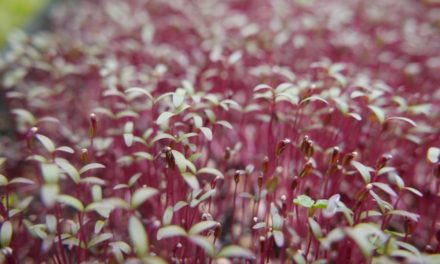Gardeners are itching to get going on their yards. Here are a few tips to get your yard ready for the growing season.
Clean-Up: Remove all debris from your garden.
Rake up last fall’s leaves, pine needles, thatch, and other debris. Make sure the grass is getting adequate moisture to avoid grass mite damage and other dry turf problems.
Aeration: Improve soil for thriving lawn conditions.
Aeration is the best way to help your lawn thrive. It will reduce thatch and soil compaction, improve water and air absorption, encourage healthy root growth and control weeds. Remember to flag sprinkler heads before aeration. Plugs should be evenly spaced and two to three inches long, so watering well beforehand is a must. Aeration provides a great surface for fertilizing or over-seeding.
Use Fertilizer: Keep soil healthy by applying fertilizer.
Fertilizer should be applied when grass is actively growing. Fertilize cool grasses such as Kentucky bluegrass, fescues, and ryegrass in the spring. Wait to fertilize warm weather grasses such as buffalo grass, blue grama, and bermudagrass in midsummer. Colorado lawns prefer a fertilizer that is primarily nitrogen and includes some iron. Mulching mowers leave the grass on the turf and essentially provide all the needed nitrogen.
If last year’s dry summer left your lawn spotty or bare, a seed that aerated lawn with new grass seed. The holes left by aeration are a perfect surface for germinating grass seed.
Test Lawn Mower: Boost new growth with sharper mower blades.
This is a great time to check your lawn mower – make sure the blades are sharp. Sharp blades cut the grass cleanly, dull blades rip or shred the grass leaving the tips ragged and yellow. Utilize the one-third rule when mowing – only remove one-third of the grass height with any one mowing. Make sure your mower height is set no lower than 2 inches; 3 to 3 ½ inches is preferable. This will aid in moisture retention and shade new growth.
Start a Vegetable Garden: Try raised beds for richer soil.
If beginning a vegetable garden this season, consider raised beds filled with good soil. Amend the soil with well-decomposed organic matter and dig it in at least 6-8 inches deep. If the amendments are not well-decomposed, nutrients needed for healthy vegetables will instead be utilized to break down the organic matter.
Plan Ahead: Pick seeds that grow during limited seasons.
Plan to plant vegetables your family enjoys eating. Make sure to pick seed varieties or nursery plants that will have ample time to grow during our limited growing season. In Colorado Springs, the last frost date is typical during the first week of May and the first frost date in early October. The growing season shortens with gains in elevation. Be prepared for snow during May or September and watch the weather reports. Use plant protection aids like walls-of-water for tomatoes and peppers or plastic row covers for tender plants. Our cool evening temperatures slow vegetable growth, adding to the days needed to reach maturity.
Moderate Soil Temperatures: Mulch vegetables to help preserve moisture.
Mulching your vegetables with a ¼” layer of grass clippings or even a few sheets of newspaper will conserve moisture, control weeds and regulate soil temperatures. Black plastic may be used under tomato and pepper plants, but make sure the plant never comes in contact with the plastic.
Eliminate Pests: Prune woody plants to protect from insects.
In perennial beds (plants that come back year after year), cut back dead tissue on woody plants, and loosen the ground around the plants to eliminate the harmful insects that overwinter or lay eggs near their favorite food sources.
Grow Better: Repeat success and learn from gardening mistakes.
This is a great time to correct planting mistakes from prior years. Move those tall plants to the rear and the shorter plants to the front. Group your perennials by water need to avoid drowning the native or low water need plants and stressing out the high water need plants. Consider planting annuals (plants that live one growing season) or biennials (plants that have a two year growing cycle, flowering the second year) among the perennials to provide continuous color and interest.
Gardeners may notice new plants in their flower beds. Some plants spread by underground roots, some plants reseed, and some plants need to be divided every few years to encourage blooming. Notice which plants are reproducing too well and make a note to limit their water or remember to deadhead after they bloom.
Mulch Flower Beds: Moderate soil levels for a healthier garden.
Mulch flower beds to conserve water and control weeds. Periodically amend the soil with a top dressing of well-decomposed organic matter around plants. When revamping a bed, dig in organic matter to amend the soil before replanting. During the growing season, fertilize with water-soluble fertilizers.
Water Shrubs and Trees: Give plants adequate water in dry conditions.
Late winter or midsummer is the deal times to perform thinning or shaping pruning to shrubs and flowering bushes. Hold off pruning spring flowering bushes or trees until they’ve finished blooming. Branches that are dead, broken or rubbing may be removed at any time.
Both trees and shrubs have been stressed by the dry conditions of this past year, but the damage may appear over the next year or two. Remember to give trees and shrubs some additional water if spring precipitation doesn’t pick up. Look for signs of disease or decline in your trees. If concerns arise, a licensed arborist may need to be consulted.
Do Maintenance: Trim branches carefully to avoid damages.
When considering cutting tree branches to facilitate raising the canopy, remember that “bleeders” such as aspen, birch, hackberry, elm, maple, poplar or willow should be pruned midsummer when tree fluid movement slows. Trees are an investment that can bring a lifetime of pleasure, shade, flowers or fruit. Consult an expert to protect that investment.
-Contact Colorado Master Gardener Desk at 636-8921 or CSUMG2@elpasoco.com, or visit the CSU Extension Office at 305 South Union Blvd. Hours are 8:30 a.m.-4:30 p.m. Mondays through Thursdays. Access fact sheets and seasonal information on the El Paso County Extension horticulture Web site.

 Photo Credit: borchee(iStock).
Photo Credit: borchee(iStock). 



Comment on: Get your Garden Ready for Spring